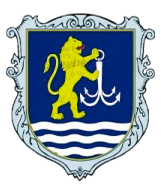ENHANCING THE EFFICIENCY OF MARITIME AGENCY OPERATIONS THROUGH THE USE OF NETWORK PLANNING
Abstract
Introduction. One of the most important elements of efficient port operations is maritime agency, which ensures interaction between all parties involved in the transport: shipowner, crew, port authorities and state regulatory bodies. The timely and high-quality performance of the agent's functions has a significant impact on the speed and quality of ship handling in the port. Due to the complication of the cargo delivery process during the period of ship handling in the port and the current demand for automation, there is a need to implement modern management methods, in particular, network planning. Purpose. The aim of the study is to increase the efficiency of the agent's work during the period of ship handling in the port by using network planning, i.e. to develop a network model of the process of ship handling by the agent to identify critical operations and take into account the execution time and identify reserves, as well as to justify the feasibility of introducing digital tools to support agent activities. Results. After the analysis and calculations, a structured network model was built, which includes all the main stages of ship agent services: from receiving a notification of the scheduled arrival of the vessel to completing the documentation after the vessel's departure. As a result of the calculations, the critical path of 34 hours was determined, and time reserves for some operations were calculated. The author also offers practical recommendations for improving the efficiency of the process, including the introduction of digital document processing systems, the use of standardized procedures and artificial intelligence to predict possible delays. Conclusions. The network planning method makes it possible to predict the process of servicing a vessel in the port and allows to increase the efficiency of the maritime agent. Its application reduces the risk of errors, shortens the time of vessel handling and increases the overall level of operational performance of ships and ports. The results of the study may be useful for practical use in Ukrainian ports, taking into account the specifics of the domestic regulatory framework.
Downloads
References
2. Петров І.М., Рудніченко М.Д. Особливості використання концепції єдиного інформаційного простору для потреб сервісних ергатичних систем на морському транспорті. Science and technology of the present time: priority development directions of Ukraine and Poland. 2018. № 1. С. 106–108.
3. Петров І.М., Вичужанін В.В., Рудніченко М.Д., Шибаева Н.О., Шибаев Д.С. Проектування автоматизованої інформаційної системи підтримки діяльності морського агента в сервісних ергатичних системах. Вісник сучасних інформаційних технологій. 2018. № 1 (1). С. 36–48.
4. Петров І.М. Модель оптимізації управління запасами на консигнаційних складах в сервісних ергатичних системах на морському транспорті. Науковий вісник Херсонської державної морської академії. 2016. № 2 (15). С. 57–64.
5. Лапкина І.О., Павловська Л.А., Болдирєва Т.В., Шутенко Т.М. Проектний аналіз: теоретичні основи оцінки проектів на морському транспорті : навчальний посібник / за заг. ред. І.О. Лапкіної. Одеса : Фенікс, 2008. 416 с.
6. ISO 21500:2021. Guidance on project management. International Organization for Standardization.
7. Kerzner H. Project Management: A Systems Approach to Planning, Scheduling, and Controlling. Wiley, 2017. 1296 p.
8. Notteboom T. The time factor in liner shipping services. Maritime Economics & Logistics. 2006. Vol. 8. P. 19–39.
9. UNCTAD. Review of Maritime Transport 2023 / United Nations Conference on Trade and Development. 2023.
10. Slack B., Comtois C., McCalla R. Ports and the Environment. Maritime Policy & Management. 2002. Vol. 29(3). P. 241–260.
11. Управління проектами: практичні аспекти реалізації стратегій регіонального розвитку : навчальний посібник / В.А. Рач, О.В. Россошанська, О.М. Медведєва ; за ред. В.А. Рача. Київ : «К.І.С.», 2010. 276 с.
12. Русанова С.С. Прикладні імперативи управління проєктами в портовій логістиці. Частина I. Планування проєкту створення логістичного центру. Наукові вісті Далівського університету. 2023. № 24. С. 45–52.
13. Шибаєв, О., Берневек, Т., & Вільшанюк, М. Вибір та обґрунтування шипчандлерських компаній для обслуговування суден контейнеровозів. Вісник Одеського національного морського університету. 2023. № 71. С. 172–183.
14. Москвіченко І.М., Стаднік В.Г. Логістичний аутсорсинг функцій лінійного агента в глобальні центри обслуговування бізнесу. Науково-виробничий журнал. 2020. № 2 (113). С. 139–146.
15. Мурад’ян А. О. Інноваційні технології в управлінні роботою портових операторів. Вісник Одеського національного морського університету. 2022. № 67. С. 124–134.
16. Розуміння послуг морського агентства з міжнародних вантажних перевезень. URL: https://www.wingspeedshipping.com/uk/Understanding-Sea-Shipping-Agent-Services-for-International-Freight (дата звернення: 14.04.2025).
17. Wijnolst N., Wergeland T. Shipping Innovation. IOS Press, 2009. 420 p.





